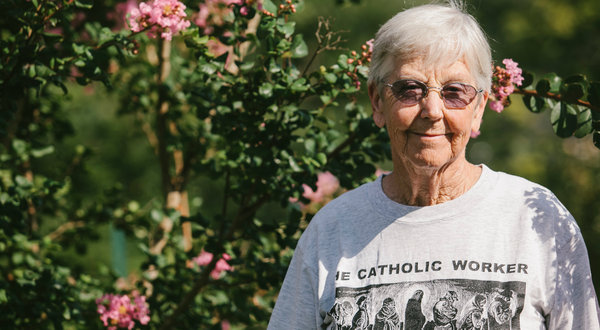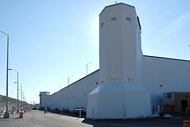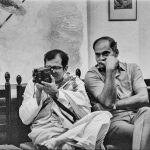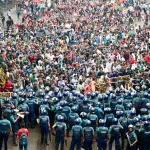By WILLIAM J. BROAD New York Times

Sister Megan Rice, 82, is one of three people arrested in a break-in at a nuclear complex in Oak Ridge, Tenn.
She has been arrested 40 or 50 times for acts of civil disobedience and once served six months in prison. In the Nevada desert, she and other peace activists knelt down to block a truck rumbling across the government?s nuclear test site, prompting the authorities to take her into custody.
Sister Rice is one of three people arrested in a break-in at a the Oak Ridge nuclear reservation.
Now, Sister Megan Rice, 82, a Roman Catholic nun of theSociety?of the Holy Child Jesus, and two male accomplices have carried out what nuclear experts call the biggest security breach in the history of the nation?s atomic complex, making their way to the inner sanctum of the site where the United States keeps crucial nuclear bomb parts and fuel.
?Deadly force is authorized,??signs there?read. ?Halt!? Images of skulls emphasize the lethal danger.
With flashlights and bolt cutters, the three?pacifists defied?barbed wire as well as armed guards, video cameras and motion sensors at the Oak Ridge nuclear reservation in Tennessee early on July 28, a Saturday. They splashed blood on the Highly Enriched Uranium Materials Facility ? a new windowless, half-billion-dollar?plant?encircled by enormous guard towers ? and hung banners outside its walls.
?Swords into plowshares,? read one, quoting the Book of Isaiah. ?Spears into pruning hooks.? The plant holds the nation?s main supply of highly enriched uranium, enough for thousands of?nuclear weapons.
The actions of Sister Rice, a New York native who grew up on a prosperous block in Morningside Heights, and her companions, ages 57 and 63, are a huge embarrassment for President Obama. Since 2010, he has led a campaign to eliminate or lock down nuclear materials as a way to fight atomic terrorism. Now, the three ? two of whom, including Sister Rice, are free and are awaiting trial in October ? have made nuclear theft seem only a little more challenging than a romp in the Tennessee woods.
In interviews this week, Sister Rice discussed her life ? somewhat reluctantly at times ? and kept emphasizing what she called ?the issue.?
?It?s the criminality of this 70-year industry,? she said. ?We spend more on nuclear arms than on the departments of education, health, transportation, disaster relief and a number of other government agencies that I can?t remember.?
Federal prosecutors, needless to say, take a different view. ?This is a matter of national security,? William C. Killian, a United States attorney, told reporters outside a Knoxville courtroom. ?It is a significant case.?
Sister Rice is no geopolitical strategist. But her bold acts and articulate fervor highlight how the antinuclear movement has evolved since the end of the cold war. They also illustrate the fierce independence of Catholic nuns, who?met this week?in St. Louis to decide how to respond to a Vatican appraisal that cast them as rebellious dissenters.
?We?re free as larks,? Sister Rice said of herself and her older religious friends. ?We have no responsibilities ? no children, no grandchildren, no jobs.?
?So the lot fell on us,? she said of fighting nuclear arms. ?We can do it. But we all do share the responsibility equally.?
Megan Gillespie Rice was born in Manhattan on Jan. 31, 1930, the youngest of three girls in a Catholic family. Her father was an obstetrician who taught at New York University and treated patients at Bellevue Hospital. Her mother received a doctorate from Columbia University in history, writing her dissertation on Catholic views about slavery.
In the?oral history, by the University of Nevada, Sister Rice portrayed her mother as strongly in favor of interracial marriage. ?I just can?t wait,? she quoted her mother as saying, ?until everybody in the world is tan!?
Sister Rice went to Catholic schools in Manhattan, became a nun at 18 and received degrees in biology from Villanova and Boston College, where her studies included class work at Harvard Medical School on how to use radioactive tracers. From 1962 to 2004, with occasional breaks, she served her order as a schoolteacher in Nigeria and Ghana.
?We slept in a classroom ? no electricity, no water,? she said of her early days in rural Africa.
While visiting Manhattan in the early 1980s, she joined in antinuclear protests. She began visiting the Nevada test site for demonstrations and prayer vigils. Her mother accompanied her at times.
Around 1990, Sister Rice and other nuns set out on foot in the desert toward the site?s operational headquarters to distribute antinuclear leaflets. But guards, she recalled, ?came up with their guns and treated us as though we were terrible criminals.?
In 1998, she was arrested in a protest at the School of the Americas, an Army school at Fort Benning, in Georgia. It taught generations of Latin American soldiers to fight leftist insurgencies; some went on to commit human rights abuses. The school has since been closed.
Sister Rice served six months in federal prison. ?It was a great eye-opener,? she said. ?When you?ve had a prison experience, it minimizes your needs very much.?
Malaria and typhoid fever began to impede her work in Africa and brought her back to the United States permanently. Around 2005, her order gave her permission to join the Nevada Desert Experience, an activist group based in Las Vegas that organizes spiritual events near the atomic test site in support of nuclear abolition.
?She?s the kind of person who would risk her life to protect others,? Jim Haber, the group?s coordinator, said in an interview.
Late last month, Sister Rice set her sights on the Oak Ridge?nuclear reservation, which covers more than 50 square miles, including wooded hills. Her aim was to draw attention to its nuclear work. After the break-in, the protesters released an??indictment??accusing the United States of crimes against humanity.
On Thursday in Knoxville, federal prosecutors shot back with an indictment of their own. They charged Sister Rice, Michael R. Walli, 63, of Washington, and Gregory I. Boertje-Obed, 57, of Duluth, Minn., with trespassing on government property (a misdemeanor) as well as its destruction and depredation (both felonies). The charges carry penalties of up to 16 years in prison and fines of up to $600,000. All pleaded not guilty.
A trial in Federal District Court in Knoxville is set for Oct. 10. If found guilty, the three defendants might be allowed to serve their sentences for the various charges concurrently, shortening their imprisonments to five years.
?She?s a pretty sympathetic character,? Ralph Hutchison, coordinator of the Oak Ridge Environmental Peace?Alliance, said of the nun. ?Sixteen years would be signing her death warrant.?
Sister Rice plans to leave Knoxville on Saturday for the Catholic Worker residence in Washington and commute to the trial from there.
She called her life privileged. ?I?ve sort of fallen heir to it,? she told the interviewer from the University of Nevada. ?I?m grateful.?






Leave a Reply
You must be logged in to post a comment.